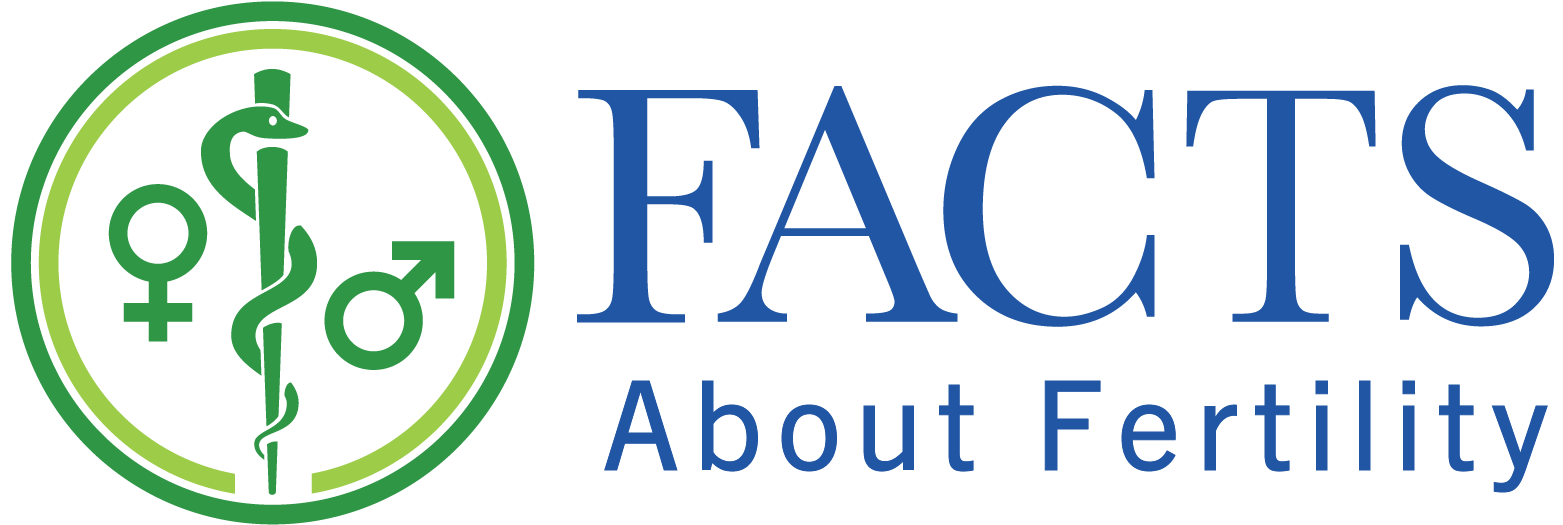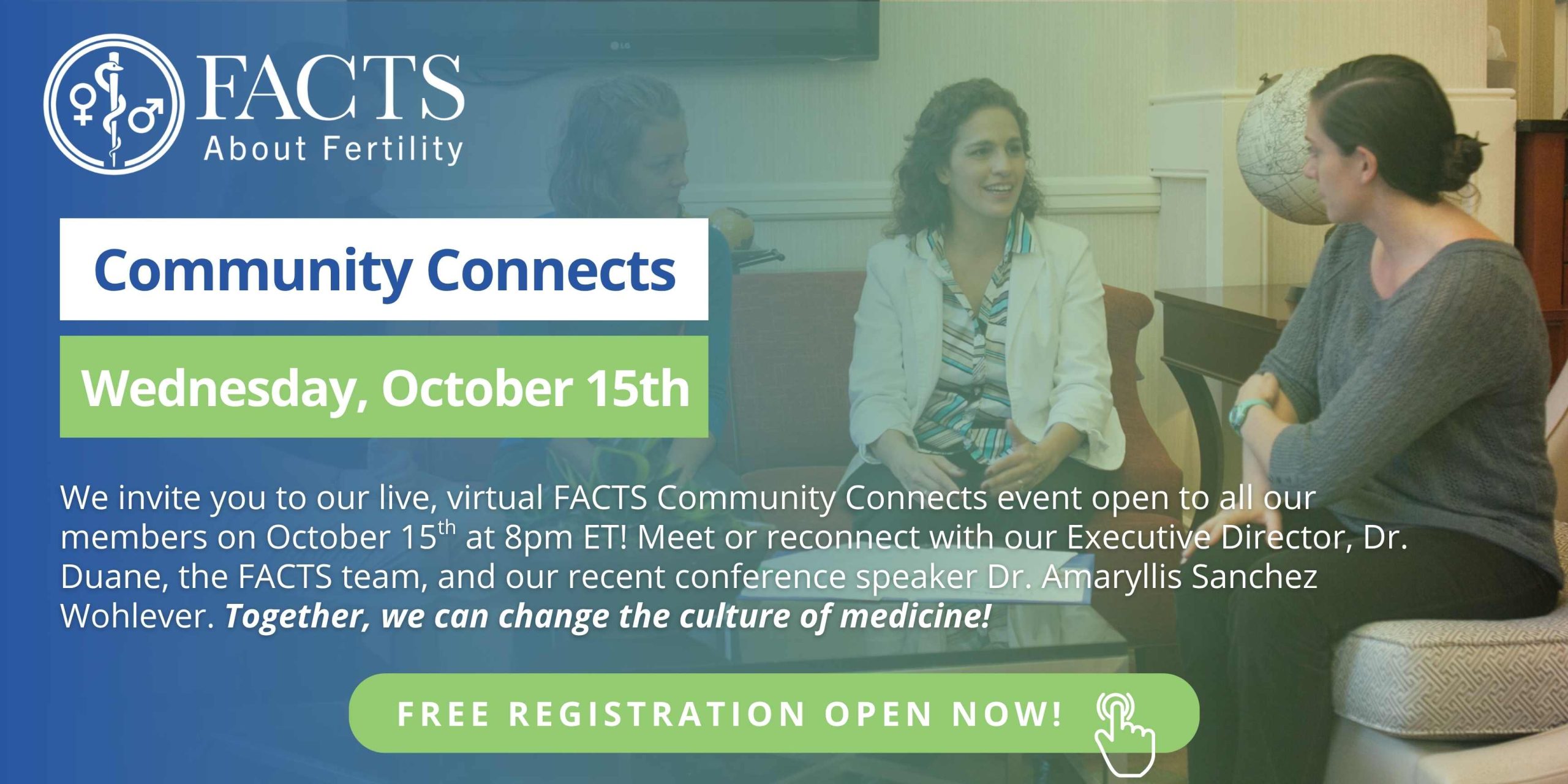By: Keisha H. Parker, DO
Editor’s Note: Dr. Keisha Parker was a fourth-year medical student when she enrolled in the FACTS elective and wrote this summary. Students on the elective have the opportunity to interview a patient who uses fertility awareness-based methods (FABMs) to chart her cycles for health monitoring and/or family planning. I encourage all medical professionals to read this interview all the way to the end, where this future physician reflects on how learning about FABMs earlier would have impacted her life. Now that she knows about FABMs and the value of charting the female cycle, she will be able to encourage her patients and colleagues through the invaluable gift of education.
Meet Lisa
Lisa* is a busy wife and mother of four children under age nine. As the daughter of parents who taught the Sympto-Thermal Method (STM) through Couple to Couple League (CCL), she was not a stranger to the concept of natural family planning (NFP). The Sympto-Thermal Method is a modern FABM that uses cervical mucus, cervix position, and basal body temperature (BBT) to help identify a woman’s fertile window.
Lisa’s Trajectory to FABMs
Lisa’s personal journey as a user of FABMs spans over a decade, starting in adolescence. She experienced severe symptoms of premenstrual syndrome (PMS) that bordered on premenstrual dysphoric disorder (PMDD). While in high school, she learned about the Creighton Model, a modern FABM that uses a standardized language and system to record cervical mucus observations. She decided to start charting then, with the goal of “fixing the PMS/PMDD issues.” Lisa found a Creighton instructor and worked with a women’s health nurse practitioner (NP) who was also a Creighton practitioner.
Severe PMS No More
After a few months of charting and getting post-peak blood tests on Peak + 3, 5, 7, and 9, Lisa learned that her estrogen and progesterone levels were too low during the luteal phase. Initially, she was prescribed estrogen patches and oral progesterone during the post-peak phase, with no noticeable improvement. She was then prescribed hCG injections on Peak + 3, 5, 7, and 9, which improved both her hormone levels and how she felt, effectively eliminating her severe PMS symptoms. The results were so impactful that she stayed on hCG injections for years — except during her pregnancies — because she felt she “couldn’t do without it.” After the birth of her now one-year-old son, she did not resume hCG treatments.
“After a few months of charting and getting post-peak blood tests … Lisa learned that her estrogen and progesterone levels were too low during the luteal phase… She was then prescribed hCG injections … effectively eliminating her severe PMS symptoms.”

Lessons Learned
Charting with FABMs Empowers Women
Over the course of the one-hour interview, three major themes emerged. The first theme was the empowering nature of charting your cycle. Lisa used charting as a fifth vital sign to discover hormonal imbalances and get treatment. This improved her overall health not only by reducing her PMS symptoms but also by leading to healthier cycles with normal bleeding patterns. She also felt empowered by knowing exactly when she would be fertile during her cycle. This enabled her to conceive within three cycles or less, which speaks to the effectiveness of FABMs to achieve pregnancy.
“Lisa used charting as a fifth vital sign to discover hormonal imbalances and get treatment. This improved her overall health not only by reducing her PMS symptoms but also by leading to healthier cycles with normal bleeding patterns.”
FABMs are Worth the Challenges
The challenges of using FABMs emerged as the second theme, as using FABMs has not always been easy for Lisa. She used the Creighton Model for about 10 years, with a short stint of CCL’s STM when she got married. For the past year, she has used the Marquette Model, a modern Sympto-Hormonal Method. Despite the powerful information the Creighton Model provided, she felt that learning the method and its mechanics was “persnickety and nitpicky” and the constant checking for cervical mucus was rather demanding for her as a busy mom.
Lisa switched to the Marquette Model while breastfeeding her youngest son, and though it was easy to learn and implement, it came with its own set of issues. After the first three cycles, she experienced 60 days in a row of a “high fertility” reading on the monitor without detecting a Peak day. She contacted her Marquette instructor, and her only option was to reset the monitor every 10 days, which left her feeling disappointed at the uncertainty of the data and what it said about her fertility. Despite the obstacles, Lisa continues to use the Marquette Model and remains open to exploring other NFP options that may better meet her needs in the future.
Growth and Healing Make the Journey Worthwhile
The final theme that emanated from our discussion was a woman’s invitation to grow through her fertility journey. When her eldest daughter was three years old, Lisa started receiving counseling to better cope with the postpartum anxiety she experienced after each of her subsequent pregnancies. When she conceived her youngest son, she viewed the pregnancy as an “invitation to greater growth and healing.” She trusted that if she continued to struggle postpartum, she and her husband would figure it out, and she would remain open to whatever changes she needed to make to cope and eventually thrive.
Fertility Advice for Women
The interview concluded with Lisa providing advice for women as they navigate their own fertility journeys. First, she encourages women to surround themselves with communities that support the fertility awareness mindset, which she felt was critical to staying hopeful through the trying times. Her second tip is to hold loosely your expectations of what you can learn through FABMs about your body, your relationship, and what in your life might need healing, whether physically, mentally, or emotionally.
“She encourages women to surround themselves with communities that support the fertility awareness mindset, which she felt was critical to staying hopeful through the trying times.”
Final Insights
I see similarities between Lisa’s sentiments and the ideas of transformative growth presented during the FACTS elective in Marc Sherman’s Organic Conceptions lecture on infertility. While Lisa has not faced infertility, the lecture described the phases of the biopsychosocial model that help women work through the mental aspects of infertility. These phases — having a sense of self, the ability to cope, and engaging in life — seem to mirror Lisa’s attempt to manage her postpartum challenges. In particular, the renewal step postulates an “awareness of the NOW, the soundness of trusting life’s process, and recognizing the gifts.” [1] Lisa has recognized the gifts of growth through her journey and is determined not to let the difficulties of the postpartum period deter her from growing her family. She and her husband remain open to conceiving more children and trust that they will continue to grow and heal through the process.
As a student in the FACTS course, I was astounded by the high effectiveness rates of FABMs to both prevent and achieve pregnancy. After learning about the various evidence-based FABMs, I felt cheated in some ways for not learning about these options earlier in life. I imagine the Creighton Model would have been an invaluable tool for me when I was diagnosed with PCOS at 18 years of age. It could have provided powerful information about my cycles through charting and working with an FABM-trained practitioner.
Editor’s Note: Follow the links to learn more about the benefits of charting the female cycle and the use of FABMs to diagnose and treat PMS and PMDD.
- Diving Deeper into Premenstrual Dysphoric Disorder: The Benefits of Charting
- NaProTechnology Benefits and Applications for Modern Women
- FABMs to Diagnose and Treat PMS: A Medical Expert’s Perspective
- The Surprising Dynamics of Luteal Phase Hormones in Premenstrual Dysphoric Disorder
- Tracking Emotions with an FABM Leads to Empowerment in PMDD
References
[1] Sherman, M. (2024) ‘Organic Conceptions Overview’ [Recorded lecture], FACTS Course Section A: Psychosocial Aspects of Infertility.
* Names have been changed to respect the privacy of the interviewee. All information is shared with permission.
ABOUT THE AUTHOR
 Dr. Keisha Parker
Dr. Keisha Parker
Dr. Keisha Parker is a first-year resident at Ascension St. Vincent’s Family Medicine in Jacksonville, FL. She earned her medical degree from the Philadelphia College of Osteopathic Medicine (PCOM) Georgia, holds a BA in Spanish & Latin American Studies from Duke University and an MBA in Management & Management Science from the University of Miami. Her professional interests include women’s health and lifestyle medicine. She enrolled in the FACTS elective to gain a better understanding of natural family planning methods and ways to share these methods with future patients so they can feel more empowered over their health and reproductive decisions.
Inspired by what you read?
You can support the ongoing work of FACTS here. To connect with a member of our team, please email development@factsaboutfertility.org. Interested in becoming an individual or organizational member? You can learn more and register here. To discuss with a member of our team, please email membership@factsaboutfertility.org.





